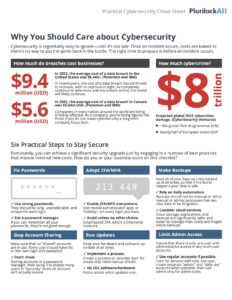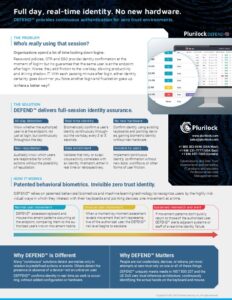Deep Dive into Insider Threats in Cybersecurity: Understanding, Significance, and Mitigation
In the ever-evolving landscape of cybersecurity, organizations face a multitude of threats from external actors, including hackers, cybercriminals, and state-sponsored entities. However, one of the most persistent and potentially devastating threats comes from within—an insider threat. Insider threats are incidents where individuals with authorized access to an organization’s systems, data, or networks misuse that access to compromise security. This deep dive explores what insider threats are, why they matter, and delves into their significance through in-depth analysis, shedding light on the critical importance of addressing this pervasive issue in modern cybersecurity.
Understanding Insider Threats
Insider threats encompass a broad spectrum of malicious activities carried out by individuals within an organization. These insiders can be current or former employees, contractors, or business partners who have access to an organization’s systems and data. The threat they pose arises from their intimate knowledge of the organization’s operations, technology, and sensitive information.
Types of Insider Threats
Insider threats are not monolithic; they can be categorized into several types:
- Malicious Insiders: These individuals intentionally engage in harmful activities, such as stealing data, sabotaging systems, or spreading malware. Motives can vary, including financial gain, revenge, or ideology.
- Negligent Insiders: Negligent employees or contractors inadvertently compromise security through careless actions, such as falling for phishing scams, mishandling data, or failing to follow security protocols.
- Compromised Insiders: An insider may unknowingly become compromised by external threats, such as hackers who gain access to their credentials or devices, allowing malicious activity within the organization.
- Unintentional Insiders: Some insiders may inadvertently contribute to security breaches due to ignorance or lack of awareness regarding security risks. They may install unauthorized software or disclose sensitive information without understanding the potential consequences.
Why Insider Threats Matter
1. Insider Knowledge and Access
Insiders possess a unique advantage over external attackers—they have inside knowledge of the organization’s infrastructure, security measures, and vulnerabilities. This insider knowledge makes them particularly dangerous as they can circumvent traditional security controls more effectively.
2. High Impact
Insider threats can have severe consequences for organizations. They can result in data breaches, financial losses, damage to reputation, and legal liabilities. The impact is often greater when compared to external threats because insiders are already trusted with access to critical systems and information.
3. Frequency and Cost
Insider threats are not isolated incidents. They are relatively common, and their costs are substantial. According to the 2021 Cost of Insider Threats Global Report by the Ponemon Institute, the average annual cost of insider threats per organization was $11.45 million.
4. Regulatory Compliance
Many industries are subject to strict regulatory requirements regarding data protection and privacy. Insider breaches can lead to non-compliance with these regulations, resulting in fines and legal actions.
5. Intellectual Property Theft
Insiders often target valuable intellectual property, trade secrets, or proprietary information. The theft or leakage of such data can have long-term consequences, including loss of competitive advantage.
In-Depth Analysis of Insider Threat Significance
To better understand the significance of insider threats in cybersecurity, let’s delve deeper into some key aspects:
A. Insider vs. External Threats
Comparing insider threats to external threats highlights their distinct characteristics and consequences. External attackers typically face multiple layers of security, such as firewalls, intrusion detection systems, and authentication mechanisms. In contrast, insiders already bypass these defenses by virtue of their authorized access. This makes it easier for them to carry out attacks and evade detection.
Moreover, insiders are often motivated by personal factors, making their actions harder to predict and mitigate. External attackers are usually driven by financial gain or ideology, while insiders may act out of revenge, personal grievances, or misguided loyalty, making their behavior less predictable.
B. Motivations Behind Insider Threats
Understanding the motivations behind insider threats is crucial for effective mitigation. Various factors can drive insiders to compromise security:
- Financial Gain: Insiders may seek financial rewards through theft of sensitive data, insider trading, or fraud.
- Revenge: Disgruntled employees may retaliate against their organization due to perceived mistreatment or conflicts.
- Espionage: Some insiders may act on behalf of external entities or competitors, stealing valuable information or trade secrets.
- Ideology or Activism: Insiders may have personal beliefs or political motives that lead them to compromise security.
- Lack of Awareness: Negligent or unintentional insiders may not fully comprehend the security implications of their actions.
- Coercion or Blackmail: Insiders may be coerced or blackmailed by external parties into carrying out malicious activities.
Each of these motivations presents unique challenges for detection and prevention, making it essential for organizations to adopt a multifaceted approach to insider threat mitigation.
C. Insider Threat Indicators
Identifying insider threats early is critical for effective response. Various indicators can help organizations spot potential insider threats:
- Behavioral Changes: Abrupt changes in an employee’s behavior, such as increased access to sensitive data or unusual work hours, may signal an insider threat.
- Excessive Data Access: Employees accessing data or systems outside the scope of their job responsibilities can be a red flag.
- Data Exfiltration: Unusual data transfers or unauthorized access to data repositories should be investigated.
- Social Engineering Attacks: Insider threats often begin with phishing or other social engineering attacks that compromise an employee’s credentials.
- Unauthorized Software Installation: Insiders may install malicious software or unauthorized applications to facilitate their actions.
D. Mitigation Strategies
To mitigate insider threats effectively, organizations must adopt a comprehensive approach that combines technological solutions, policies, and employee training:
- User and Entity Behavior Analytics (UEBA): UEBA solutions can monitor user behavior and detect anomalies that may indicate insider threats.
- Access Control: Implement strict access controls, least privilege principles, and two-factor authentication to limit the potential for misuse of access.
- Data Loss Prevention (DLP): DLP tools can help identify and prevent unauthorized data transfers or leaks.
- Employee Training: Regular security awareness training can help employees recognize and report insider threat indicators.
- Incident Response Plan: Develop and test an incident response plan specifically tailored to address insider threats.
- Continuous Monitoring: Employ continuous monitoring of networks and systems to quickly detect and respond to suspicious activities.
- Whistleblower Programs: Encourage employees to report suspicious behavior through anonymous whistleblower programs.
Conclusion
Insider threats in cybersecurity pose a significant and complex challenge for organizations. They are characterized by their unique insider knowledge and access, high impact, frequency, and varied motivations. Insider threats demand comprehensive mitigation strategies that combine technological solutions, policies, and employee training. Ignoring the significance of insider threats can lead to severe consequences, including data breaches, financial losses, and damage to an organization’s reputation. As the cybersecurity landscape continues to evolve, organizations must prioritize addressing the insider threat to safeguard their critical assets and maintain trust with stakeholders.














